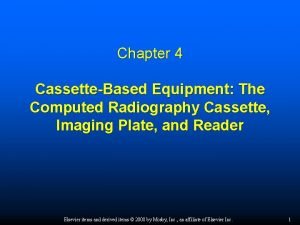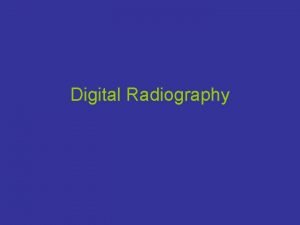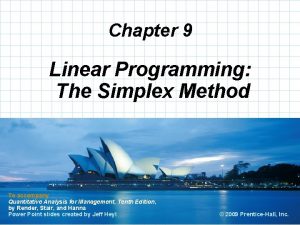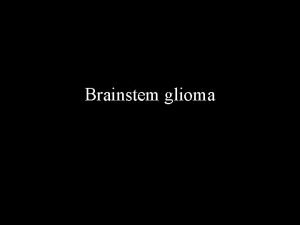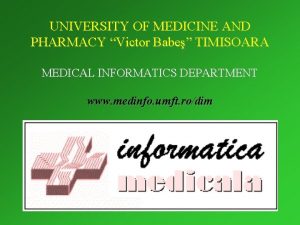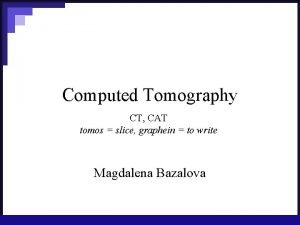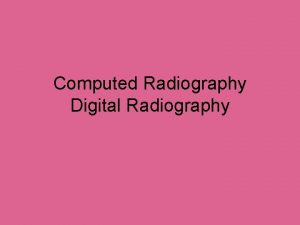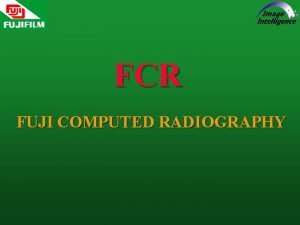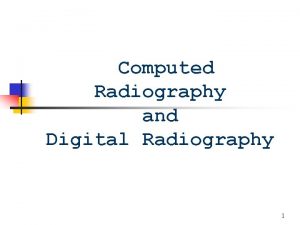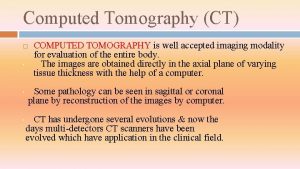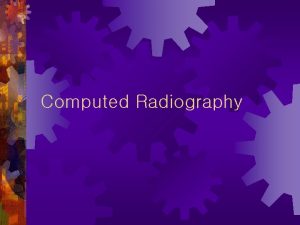Computed Radiography The Computed Radiography System Computed radiography








- Slides: 8

Computed Radiography

The Computed Radiography System Computed radiography is performed by a system consisting of the following functional components • A digital image receptor (The Imaging Plate) • A digital image processing unit • An image management system • Image and data storage devices • Interface to a patient information system • A communications network • A display device with viewer operated controls

Computed Radiography (CR) is a process of capturing Radiographic data from a conventional X-ray machine and processing the data digitally to produce high quality Radiographic image. For exposure , an imaging plate(IP) is placed in a cassete instad of a piece of film. The IP captures and stores the X -ray. The image is developed in a CR reader instead of a film processor. The CR reader extracts the information stored in the plate and produces a digital image.


The imaging plate is coated with photostimulable phosphor, also called storage phosphor. The phosphor material is generally a kind of Bariumfluorohalide. The imaging plate contains not only the phosphor layer, but also a protective coat, a conductive layer, support and laminate layers.

When exposed to x-rays, electrons in the phosphor plate are excited into a higher energy state, forming a latent image. An image reader scans the phosphor plate with a laser spot. When the trapped electrons absorb the laser energy, they emit light as they return to their ground state. This light is collected by a light guide and transmitted to a photomultiplier tube, which produces an analog electrical signal that is amplified, converted to a digital signal, and digitally stored. The plate can be reused after it is exposed to an erasing light that removes residual radiation.

Advantages Computed radiography compared with conventional film/screen combinations include improved contrast resolution and post processing capabilities. Disadvantages Imaging plates(IP’s) are quite expensive and can be easily damaged. Result in damage to the IP, for image artifacts.

2007 - Feb
